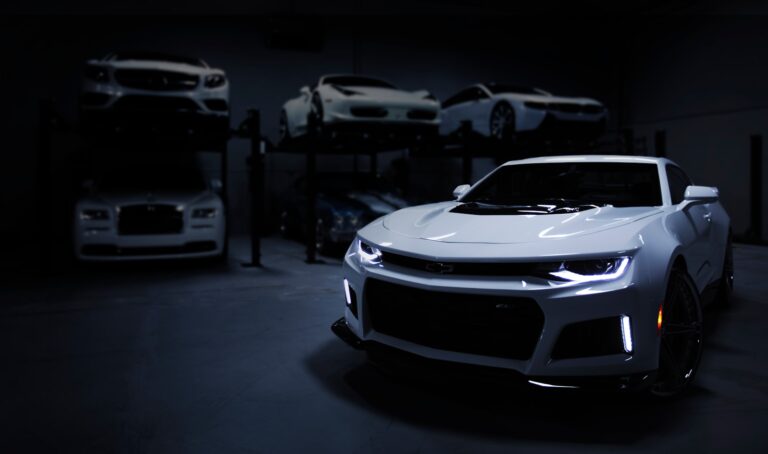Car Colors Tell All: What Your Vehicle’s Paint Says About You
Your choice of car color speaks volumes before you ever hit the gas pedal. While many buyers focus on horsepower, fuel efficiency, and safety features, the color of your vehicle might reveal more about your personality—and affect your ownership experience—than you realize. From classic white to bold red, each shade carries its own psychological significance and practical implications. According to recent studies by the Color Marketing Group, up to 85% of consumers cite color as a primary reason for purchasing a particular vehicle, making it one of the most crucial decisions in the car-buying process. In this comprehensive guide, we’ll explore the psychology behind color choices, what they reveal about personality types, and how your selection impacts everything from maintenance requirements to resale value.

The Psychology Behind Popular Car Colors
When it comes to choosing a vehicle, color plays a far more significant role than most buyers realize. According to a 2023 Axalta Global Automotive Color Popularity Report, white continues to reign supreme for the 11th consecutive year, commanding 38% of the global market share. But what drives these color choices, and why do certain hues dominate our roads?
Color psychology experts suggest that our vehicle color preferences are deeply rooted in both personal psychology and cultural influences. Dr. Sarah Martinez, a consumer behavior specialist at the University of Michigan, explains that “Color selection is rarely random. It’s often a subconscious reflection of how we want to be perceived by society or how we see ourselves.”
Research shows that color preferences in automobiles often correlate with broader societal trends and economic conditions. During economic downturns, for instance, conservative colors like silver and black tend to spike in popularity. Conversely, during periods of prosperity, we see an uptick in bold, expressive colors like red and electric blue.
The Regional Color Factor
- North America: Gravitates toward neutral colors (white, black, gray)
- Europe: Shows higher preference for sophisticated metallics
- Asia: Demonstrates strong affinity for white vehicles
- South America: More likely to embrace vibrant, expressive colors
The generational divide also plays a crucial role in color selection. Millennials and Gen Z buyers are twice as likely to choose bold, unconventional colors compared to their Baby Boomer counterparts. This shift has prompted manufacturers like BMW and Tesla to introduce more diverse color options, including matte finishes and color-shifting paints.
Environmental consciousness has emerged as another significant factor influencing color choices. “We’re seeing a growing preference for earth tones and greens among environmentally conscious buyers,” notes Joseph Chen, Senior Editor at CarsInsiders.com. “It’s part of a larger trend where consumers want their vehicles to reflect their values.”
Quick Take:
Most Popular Car Colors Globally (2023)
- White: 38%
- Black: 19%
- Gray: 15%
- Silver: 9%
- Blue: 7%
- Red: 5%
- Other: 7%
Understanding the psychology behind car color preferences isn’t just academic curiosity—it’s valuable information for buyers and sellers alike. Whether you’re choosing a new vehicle or maintaining your current one, color psychology can impact everything from resale value to daily driving experience.
What Each Car Color Reveals About Personality Types
Your car’s color might reveal more about your personality than you think. While individual preferences vary, research from the Color Marketing Group and automotive psychology studies has uncovered fascinating correlations between color choices and personality traits. Let’s dive into what your vehicle’s paint job might be saying about you.
White: The Executive Choice
White vehicle owners often exhibit precision and organizational skills. “White car drivers typically value order and cleanliness,” explains Joseph Chen. “They’re often perfectionists who appreciate a fresh, clean aesthetic.” These drivers tend to be:
- Detail-oriented professionals
- Modern minimalists
- Technology enthusiasts
- Status-conscious individuals
Black: The Power Player
Black vehicle owners frequently project an image of sophistication and power. This classic choice often indicates:
- Strong leadership qualities
- Appreciation for elegance
- Professional success
- Desire for timeless style
Quick Take: Black vehicles maintain their popularity among executives and luxury car buyers, with 75% of luxury vehicles sold in either black or white.
Silver and Gray: The Practical Pragmatist
Drivers who choose silver or gray often demonstrate:
- Practical decision-making
- Innovation-focused mindset
- Business-oriented perspective
- Balance between flash and function
Red: The Bold Enthusiast
Red car owners typically share these characteristics:
- High-energy personality
- Confidence and assertiveness
- Passion for life
- Desire for attention
Blue: The Stable Optimist
Blue vehicle owners often display:
- Stability and dependability
- Trustworthiness
- Calm demeanor
- Team-player mentality
Green: The Environmentalist
Those choosing green vehicles frequently demonstrate:
- Environmental consciousness
- Independent thinking
- Balance between tradition and innovation
- Connection to nature
Yellow and Orange: The Free Spirit
Bright color enthusiasts typically share:
- Joyful outlook
- Creative personality
- Youth-oriented mindset
- Comfort with standing out
Expert Insight
Dr. Jennifer Wallace, automotive psychologist at the Consumer Behavior Institute, notes that “While color choices can indicate personality traits, they’re also influenced by factors like vehicle availability, cultural background, and current trends.” This reminds us that while color psychology provides interesting insights, it shouldn’t be viewed as definitive.
Generational Preferences
Recent studies show distinct generational differences in color choices:
- Gen Z: More likely to choose bright, unique colors
- Millennials: Prefer metallic and pearl finishes
- Gen X: Gravitate toward practical, neutral tones
- Baby Boomers: Stick to traditional color choices
Remember that while these associations can be insightful, they’re not absolute rules. Cultural factors, personal experiences, and practical considerations all play important roles in color selection. Whether you’re drawn to a classic black sedan or a bright yellow sports car, the most important factor is choosing a color that makes you feel confident and comfortable.
How Color Choices Impact Your Car’s Value and Maintenance
When it comes to your vehicle’s long-term value and care requirements, color plays a more crucial role than many realize. According to data from Kelley Blue Book, color can affect a car’s resale value by up to $1,000, depending on the make, model, and market conditions.
Quick Take: Resale Value by Color
- White: Maintains highest average resale value
- Black: Strong resale but highest maintenance
- Silver: Above-average resale, hides dirt well
- Bold colors: Variable resale, depends on model
Maintenance Considerations
Different colors require varying levels of maintenance attention. Black vehicles, while stunning when clean, show every speck of dust and scratch. “Black cars are essentially a full-time commitment,” notes Joseph Chen. “They require frequent washing and careful maintenance to maintain their showroom appeal.”
Here’s how different colors rank in maintenance requirements:
High Maintenance:
- Black: Shows everything, needs frequent cleaning
- Dark Blue: Reveals swirl marks easily
- Dark Red: Prone to visible oxidation
Medium Maintenance:
- White: Shows dirt but hides minor scratches
- Bright Red: Requires UV protection
- Dark Green: Shows water spots
Low Maintenance:
- Silver: Hides dirt and minor scratches
- Gray: Conceals road grime
- Beige: Masks dust and pollen
Market Impact
The relationship between color and value varies by vehicle type:
- Sports Cars: Bold colors often command premium prices
- Luxury Vehicles: Conservative colors maintain better value
- Family SUVs: Neutral colors sell faster
- Pickup Trucks: White typically holds highest value
Professional Tips for Color Maintenance
- Protection Strategies
- Apply paint protection film to high-impact areas
- Use ceramic coating for enhanced protection
- Invest in quality car covers for outdoor parking
- Regular waxing every 3-4 months
- Cleaning Protocols
- Wash in shade to prevent water spots
- Use color-specific car shampoos
- Implement two-bucket washing method
- Dry with microfiber towels only
Cost Considerations
Annual maintenance costs can vary significantly by color:
- Black vehicles: $180-250 extra annually
- White vehicles: $120-150 extra annually
- Silver/Gray vehicles: $80-100 extra annually
“The key is understanding what you’re getting into,” explains Chen. “A black car might be worth the extra effort for some, while others might prefer the practical benefits of silver or gray.”
Future Value Projections
Industry experts predict that certain color trends will affect future resale values:
- Classic colors will maintain steady value
- Unique colors may appreciate for specific models
- Neutral tones will remain safest for resale
- Limited edition colors could become collectible
Whether you’re buying new or used, considering these practical aspects of car color can help you make a more informed decision that balances personal preference with pragmatic concerns about maintenance and resale value.
The Final Verdict: Making Your Color Choice Count
Choosing your vehicle’s color is far more than an aesthetic decision—it’s a statement about who you are and a commitment to specific maintenance requirements and resale considerations. While white continues to dominate global markets and black remains a symbol of luxury, the growing diversity in car color options reflects our evolving automotive culture and individual expressions of personality.
Remember that while color psychology can offer fascinating insights into personality traits, the best color choice is ultimately one that balances your personal preferences with practical considerations. Whether you’re drawn to the professional appeal of a white sedan, the bold statement of a red sports car, or the practical benefits of a silver SUV, understanding the implications of your color choice helps you make a more informed decision.
Pro Tip: Before finalizing your color choice, consider:
- Your long-term maintenance commitment
- Local climate conditions
- Resale market in your area
- Personal cleaning habits
- Parking situation (garage vs. street)
As Joseph Chen notes, “The perfect car color is one that makes you smile every time you approach your vehicle, while still meeting your practical needs for years to come.” After all, you’re not just choosing a color—you’re choosing a daily companion that reflects your personality and lifestyle.






